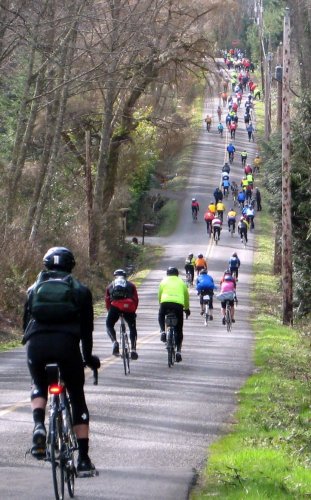
If you ever get the chance to go site seeing or museuming with me, don't. Hiking, biking, backpacking, kayaking, or anything like that – I'm a great companion, but touristing, even if you're lying, say you're busy. My present trip to Washington, DC confirms my long ignored suspicions that I have no talent for looking at things.
In the 2.5 days I was in DC I went to The Capitol, the Library of Congress, “The Castle”, the Museum of American History(more on the maritime exhibit in another post), the White House Visitor Center, the National Archives, The National Book Fair, Washington Monument, WWII Monument, Lincoln Monument, Vietnam War Memorial, and the Hershorn Art Museum, and I'm not sure what I got out of it.
Museum curators, when designing an exhibit, are trying to answer the question "So what?" Looking over their exhibits, the one question that keeps popping up in my head is "Why?" Why do I or anyone need to be here to see this stuff? What are we hoping/expecting/expected to get out of it?"
The Reading Room at the Library of Congress, the Lincoln Monument, the Vietnam Memorial and the Veterans and volunteers at the World War II Monument were truly awe inspiring. Climbing the steps to the Lincoln statue I recalled Sarah Vowell's description of her visit there in
Assassination Vacation
. (A book that looks at history by visiting sites associated with presidential assassinations) Not only does she tell of the creation of the Memorial, the citing and lighting issues, but also of her relation and how she stayed a long while watching other peoples. I cried. There is a feeling there, under this great man's gaze, inside this giant marble greek temple, on the top of hill, with the Washington Monument behind you, and behind that the Capitol. There is a sense of time too, both eternal, but also you sense his time, that "great battlefield" on which he was engaged, and that we too are on that battlefield, not in war sense, but in the sense of doing, and being what is right.
Exhibit wise, I was not so impressed, having more of a "been there, done that" or "I could have read this (and a lot more) just about anywhere" experience. I guess I lack that reverence for the "true cross" that museum folks always talk about. Seeing the original Star Spangled Banner left me more annoyed with the idolaters who cut out one of the stars than well, whatever we were supposed to feel/learn/? And don't even mention the "ruby' (aka plastic sequin) slippers to me. Then there was the White House Visitor Center. Since, for understandable reasons, visitors can't just tour the White House they have shunted them over to a building on Pennsylvania Avenue where there are a few aged panel exhibits and a 30 minute video tour of the White House. Excuse me? I came all the way to DC and you want me to sit and watch a mediocre video I could see anywhere? The more of these video tours I saw, the more annoyed I got with them. With one exception. The Castle runs a 10 minute introduction to all the Smithsonian Museums and is hosted by Ben Stiller. It's well produced and genuinely informative as opposed to the media sales talk type.
Well, could go on, but I won't. I will do a later post on the National Book Fair , another on the "On the Water" exhibit, but later.
 1. Chemex
1. Chemex




























